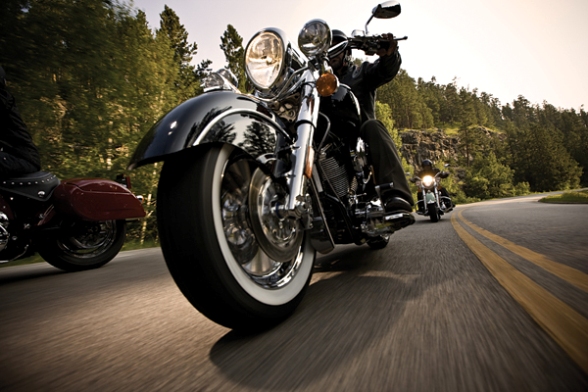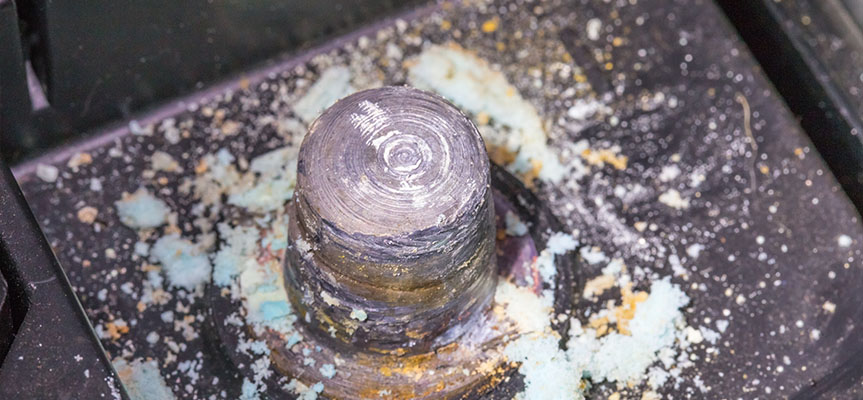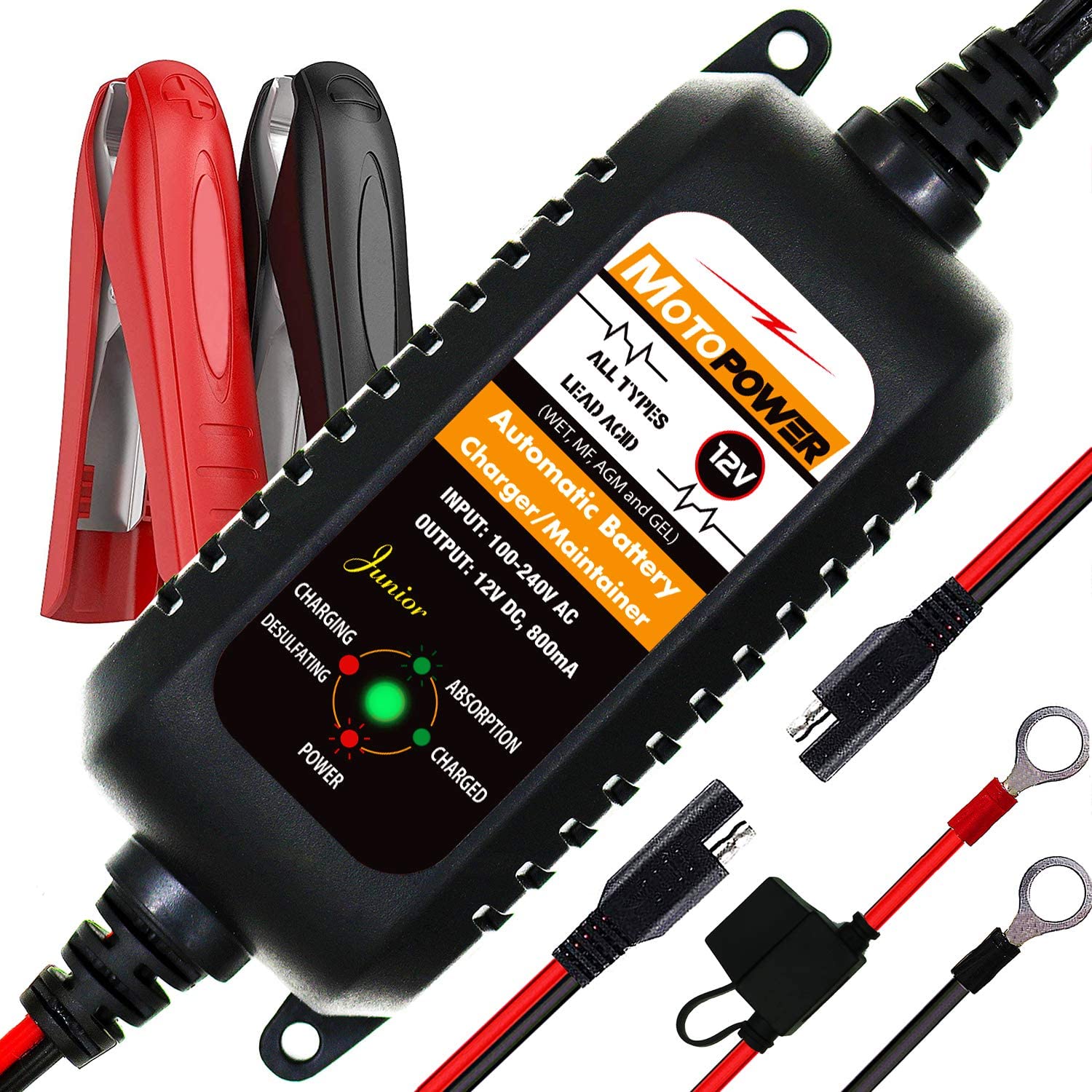
Motorcycle Batteries: Lifespan & Options
There’s nothing quite like hitting the open road on a motorcycle — but before renting or selling bikes to eager customers, you’ll need to consider how you will power up these vehicles.

Motorcycles are an interesting vehicle choice because, in warmer climates, they can provide an efficient, exciting method of transportation year-round. But in cooler temperatures, motorcycles may need to be parked for several months of the year when it’s too cold to ride.
To provide the most reliable ride, you’ll need to provide customers with plenty of options for buying or renting reliable bikes with motorcycle batteries that have long lifespans.
From finding the right motorcycle battery to understanding its lifespan and even learning how to care for and store the battery, here’s everything you need to know.
Types of Motorcycle Batteries
Like cars and trucks, motorcycles can run on different battery types, including traditional flooded batteries, high-performance flooded batteries, absorbent glass mat (AGM) batteries and even lithium batteries. Each type has its own benefits to consider.
Flooded batteries. Many consumers are familiar with flooded batteries, also called wet cell batteries. Conventional flooded batteries come in 6- or 12-volt configurations and work best for basic motorcycles. One of the major benefits of traditional flooded batteries is that they’re one of the most affordable options.
With flooded batteries, you can also choose high-performance versions. These cost slightly more than a traditional wet cell battery but offer better resistance to the vibrations and impacts that motorcycles often experience.
AGM. Absorbent glass mat (AGM) batteries have fiberglass separators inside the battery that absorb liquid electrolytes and store them in a dry state. This is different from flooded batteries, which have liquid electrolytes.
Because the electrolyte is stored in a dry state, this type of battery requires little maintenance. The sealed battery is also safer because it cannot spill, which is ideal for motorcycles that can experience a lot of jostling on the road or along rough terrain. AGM batteries are highly durable, even withstanding more extreme temperatures than their flooded battery counterparts. They may cost a bit more, but they can also last longer.
Lithium. Looking for a highly powerful battery that can withstand frequent usage? Consider lithium batteries, which are lightweight and efficient yet powerful enough for even the most robust motorcycles with all the bells and whistles.
For motorcycles, lithium batteries offer the benefit of quick recharging, and they have low self-discharge rates. That means if the motorcycle needs to be stored away for winter or when not in use, it will lose very little power, making it more reliable.
Lithium batteries can be one of the most expensive investments upfront, but with proper care, they are durable and have a long lifespan.
Motorcycle Battery Lifespan
What is the lifespan of a motorcycle battery, anyway? It depends on the battery type, but most motorcycle batteries last about two to five years. In addition, the battery type and how you store and care for the motorcycle and its battery can shorten or extend its lifespan.
Flooded batteries typically last about two to three years with regular use, or one to two years for motorcycles that only run occasionally rather than daily.
AGM batteries last around three to five years, thanks to the suspended electrolyte design, which makes the batteries quicker to charge yet slower to discharge.
Lithium batteries have the longest lifespan, usually around five years or longer, even with less frequent use.
What to Look for in a Motorcycle Battery
Understanding the benefits and lifespan of different motorcycle battery types is important when buying a battery, but there are some other factors to take into account based on how your customers will be using the motorcycle. Is it a commuter bike or reserved for weekend riding? Will the motorcycle stay on smooth, paved city streets, or could it hit some rough terrain?
Power rating. This refers to the voltage of the battery, which is often a 6- or 12-volt. A higher power rating means the battery is better equipped for more powerful vehicles, and higher power ratings can also be useful for determining the battery’s durability.
Reserve capacity. Once you install the new battery in a motorcycle, you’ll want to know how long it will stay charged. This metric is called the reserve capacity.
Amp hour. The amp hour measures electric charge, telling you how much amperage a battery will provide in one hour. Motorcycles usually have about 5 AH to 20 AH, with higher amp-hour ratings being better.
Cold-cranking amps. Also referred to as CCA, this metric will tell you the number of amps a battery can deliver within 30 seconds at freezing point (0°C or 32°F). A higher CCA means the battery is more reliable in colder weather.
Maintenance Tips for Motorcycle Batteries
Once you’ve found the right motorcycle battery to suit your needs, you can help make sure the battery is always ready for action by keeping up with a few simple maintenance tasks:
Clean batteries. Batteries, especially flooded, can get corroded over time. To keep them clean, use a commercial battery cleaner or a paste made with baking soda and water to clean off any corrosion forming on the terminals.

Water flooded batteries. Flooded batteries need to be refilled about every two weeks to a month. Use distilled water to refill a flooded battery’s electrolyte.
Charge batteries, but don’t overcharge. Keeping motorcycle batteries charged properly is important for the lifespan of the batteries. Riding the bike regularly will help recharge the batteries, but if you plan to store it, invest in a motorcycle battery charger, ideally one with automatic shut-off, to prevent the battery from overcharging.

Conduct inspections. The best way to extend the life of your motorcycle battery is to keep a close eye on it. Check the battery at least once a month for signs of corrosion, low electrolyte levels or other damage, like bulging or cracking.
Storing Powersport Batteries

Unlike your everyday cars and trucks, motorcycles and other powersport vehicles may go several days, weeks or even months without use. Riders may need to store vehicles for the winter or during rainy seasons.
But keeping a motorcycle parked for long periods of time can put a real drain on the battery. When the rider goes to start it back up, the battery may be dead or completely discharged. That’s why proper motorcycle battery storage is crucial.
Here are some tips to storing motorcycle batteries:
Test batteries. Run the motorcycle batteries at least once a week during seasons when the bike is not in use.
Charge batteries. You can keep stored motorcycle batteries fully charged with a trickle charger to ensure the battery will work when you are ready to ride. You’ll only need to maintain about a 50% charge for lithium batteries.
Remove batteries. Rather than keeping the battery inside the motorcycle, you can disconnect it from the vehicle and connect it to an automatic charger to store it for longer periods when the bike isn’t in use. This can help extend the life of the battery.
Store in a warm place. Because the cold can hinder the lifespan of the battery, store the disconnected battery or the motorcycle and its connected battery in a warm place, like a climate-controlled garage. This can help control vapor loss, a common problem for flooded motorcycle batteries.
Power Your Motorcycle with the Best Battery
With multiple battery options to choose from for motorcycles, finding the right one for your fleet depends on your and your customers’ needs and budgets. No matter what battery you opt for, you can ensure the lifespan is as long as possible by storing and caring for motorcycle batteries properly so that every rider can drive the bike carefree.